2015 BMW R 1200 R Announced
BMW announced a new R1200 R on September 30 at the 2014 Intermot show in Cologne.
They call it “The boxer roadster for the keen rider.”
BMW also announced the 2015 BMW R 1200 RS (Preview) variant of the R 1200 R in the following edited press release.
The BMW “Boxer” flat twin engine has kept enthusiasts enthralled ever since the arrival of the R 32 some 91 years ago, during which time the BMW “roadster” (aka “standard”) has come to symbolize the ultimate in unadulterated motorcycling pleasure.
Not surprising, since the propulsive power of the classic boxer engine has an inimitable character and glorious sound. From cruising along serenely to powering down country roads to touring with a passenger and luggage, the boxer-engined roadster models from BMW Motorrad have always made for the ideal partner.
The new R 1200 R upholds this tradition of comfort, dynamism and touring capability, at the same time as putting a new slant on the alluring blend.
 BMW R 1200 R Boxer Engine
BMW R 1200 R Boxer Engine
The flat-twin boxer engine on the new R 1200 R is the same DOHC drive unit that already powers the R 1200 GS and R 1200 GS Adventure as well as the R 1200 RT and the new R 1200 RS.
It produces 125 HP (92 kW) at 7,750 RPM and develops its peak torque of 92 ft. lbs. (125 Nm) at 6,500 RPM. Compared to the engine on its predecessor, not only has torque been increased substantially throughout the rev range, but delivery is now more uniform.
The exhaust gases are routed through a 2-into-1 exhaust system with a dynamic-looking, steeply angled rear silencer. A modified airbox and newly shaped air intake snorkels, as well as a centrally positioned radiator, all lend themselves to the slender front silhouette to which all roadsters aspire.
ABS, ASC and Two Riding Modes Standard
For optimum adaptation to the rider’s individual needs, the new R 1200 R already comes equipped as standard with the two riding modes “Rain” and “Road”. Riding mode Pro with Dynamic Traction Control (DTC) as an optional extra.
Besides ABS, the standard specification also includes Automatic Stability Control (ASC) for increased handling safety when accelerating.
And when specified with the optional Riding mode Pro feature, the new R 1200 R also adds Dynamic Traction Control (DTC) with banking detection as well as two extra riding modes: “Dynamic” and “User” to its technical repertoire.
Upside-Down Forks and New Tubular Frame
A new tubular steel bridge frame incorporating the flat-twin engine as a self-supporting element was purpose-developed for the new R 1200 R.
With an upside-down telescopic fork at the front and EVO Paralever at the rear, the wheel suspension remains true to classical roadster principles that have been updated in typical BMW Motorrad fashion.
Excellent steering precision, directional accuracy, handling and braking rigidity were all top priorities when configuring the chassis, while never losing sight of the overriding objective for the new R 1200 R of creating an exceptionally dynamic roadster for the keen rider, whose design language is derived from the S 1000 RR superbike.
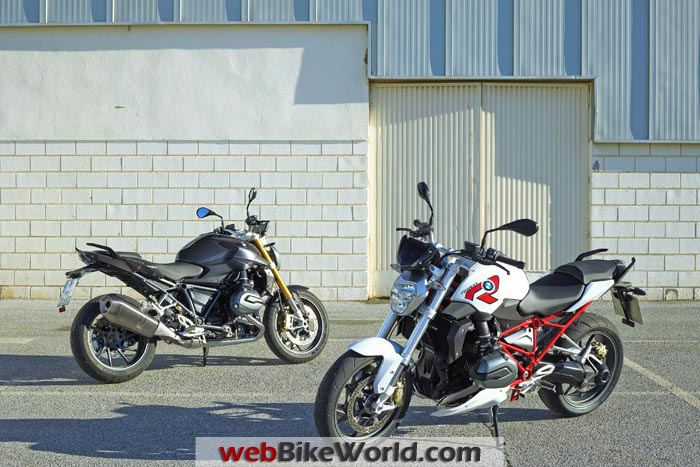
Dynamic ESA
The new R 1200 R has the latest-generation Dynamic ESA (Electronic Suspension Adjustment) for ideal riding dynamics in any situation.
Opting for the latest generation of the electronically controlled suspension, Dynamic ESA (Electronic Suspension Adjustment) takes the dynamic riding experience to even greater heights. With its two damping settings “Road” and “Dynamic”, Dynamic ESA enables the rider to enjoy unprecedented levels of handling safety, performance and comfort, as the damping is automatically adapted to the prevailing riding conditions to suit the riding situation and the maneuvers being carried out.
Multi-Function Instrument Cluster
Also new is the multifunctional instrument cluster with analogue speedometer, onboard computer and a wealth of information.
Even the instrumentation of the new R 1200 R takes a quantum leap into a new roadster era. The speed is displayed in traditional fashion by an analogue speedometer, but there is also a TFT display for showing a wide array of information.
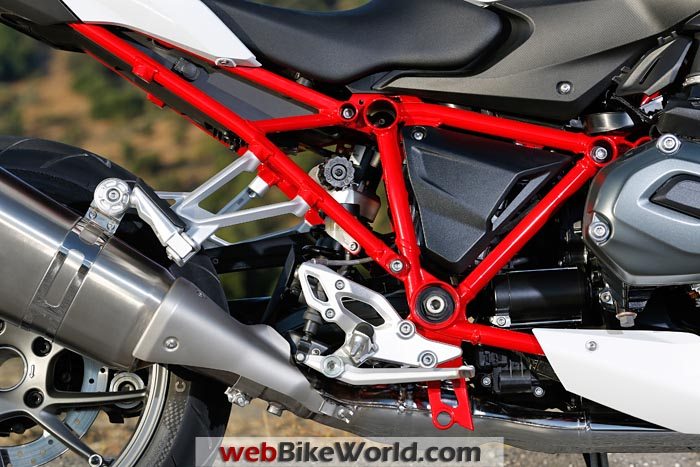
Dynamic Proportions and Colors
The new R 1200 R proportions give the bike a pared-down roadster look. Three color and finish variations are available, each with their own character.
The BMW Motorrad boxer roadsters have always enjoyed a reputation for being the perfect companions for everyday use. The new BMW R 1200 R fuses these all-round credentials with both significantly sharper performance and a contemporary, pared-down roadster look.
The dynamic proportions, with the low-set front and the light, almost delicate-looking tail jutting up at the rear, give the bike a slight wedge shape and leave no doubt as to its sporting prowess, along with its many other talents.
Three color and finish variants each underline the powerful character of the new R 1200 R, but in their own individual way. This results in a choice of three decidedly different styling variants: the basic color in Cordoba blue non-metallic, the “Style 1” variant in Light white non-metallic with frame in Racing red, and the “Style 2” variant in Thunder grey metallic with frame in Agate grey metallic matte.
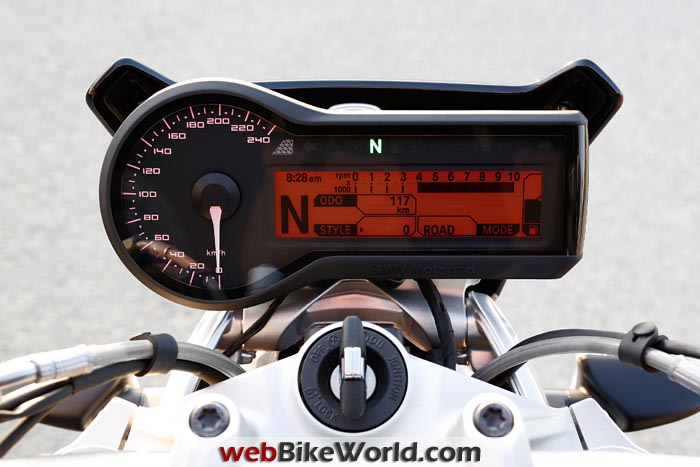
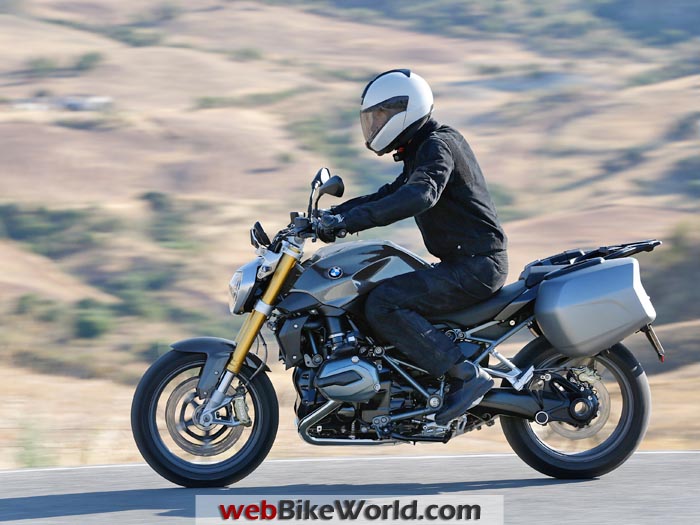
Highlights of the New BMW R 1200 R
- Classic flat-twin boxer engine with 125 HP (92 kW) at 7,750 RPM and 92 ft. lbs. of torque (125 Nm) at 6,500 RPM.
- Dynamic-looking, compelling roadster design.
- Torsionally rigid tubular steel bridge frame with engine as self-supporting element.
- Classic wheel suspension concept using upside-down telescopic fork at the front and EVO Paralever at the rear.
- New intake air duct and central radiator for ultra-compact front silhouette.
- Upright seating position with front bias for a dynamic riding sensation combined with excellent seating comfort for longer tours.
- Restyled exhaust system in pentagonal design.
- Automatic Stability Control (ASC).
- “Rain” and “Road” riding modes.
- Riding mode Pro offering two additional riding modes, “Dynamic” and “User”, for optimum adaptation to prevailing riding conditions as an ex-works option.
- Dynamic Traction Control (DTC) as part of the Riding mode Pro option.
- Latest-generation Dynamic ESA (Electronic Suspension Adjustment) as an option for optimum riding dynamics in any situation.
- Powerful braking system with radial four-piston callipers and ABS.
- Lightweight 10-spoke cast wheels.
- Gear Shift Assistant Pro for fast, clutchless shifting as an ex-works option.
- Sophisticated instrument cluster offering a wide array of functions and wealth of information.
- Keyless Ride for supreme ease of use as an ex-works option.
- Innovative color scheme with three individual characters: Basic colour, “Style 1” and “Style 2”.
- Extensive range of optional extras and special accessories available ex-works.
Pricing and Availability
Pricing TBD. The BMW R 1200 R will be available starting in Spring 2015.
More: 2015 BMW Motorcycles Preview | wBW BMW Motorcycles Page
Owner Comments and Feedback
See details on submitting comments.
From “S.P.” (July 2015): “I’m the proud owner of a 2012 R1200R (full options, ESA, DTC, etc.) and have 50K+ miles on it. I tested the 2015 opus and was quite disappointed; bigger wheelbase makes it less agile and the additional 15HP barely compensate for the extra weight.
It is meant to be sportier than its predecessor, but its price exceeds the one of a S1000R, which is a lot sportier both in looks and performance.
I like the mix of technology and tradition of the previous, Telelever versions; it has character, with a traditional air/oil cooled engine but with 2 sparks / 4 valves per cylinder, electronic evolutions, etc. it has respectable performances. The new one has less personality, and looks that do not fit the performance it provides.
To address R.B.’s comment (below) on the Telelever; of course this front fork system is not adequate for a Superbike. But (heck), the 2015 R1200R is less sporty than its predecessor, being heavier and less agile!
And the current evolution of the Telelever is more precise and gives better feedback than a lot of traditional fork systems (and way better than your 1100S for example).
The reasons why they dropped it are price, the water radiator taking a lot of space, the improvements made on electronic control (dynamic stiffening) over traditional forks and, most likely, the looks.
The Telelever fits 100% (not 75% as you may think) of the riding experience you may expect from this kind of bike, the only limitations appearing on the race track. But then its weight, braking power, angle limit, etc. all come in the way of a proper race track use… which it is not designed for anyway.
On the road, this package of comfort, safety, precision and power, put in experienced hands prove to be a serious challenge to follow on a curvy Alps road.
So no, nothing they changed/added on this year’s model seem an improvement to me; the loss of the Telelever and the price rate being over the one of a S1000R would prevent me from buying into this at all.”
From “J.B.” (April 2015): “Further to the comments from H.S and R.B. (below), there is no need to mourn the loss of the Telelever front end. After a long test ride on the 2015 R1200R I can confirm it’s one of the best handling bikes I’ve ridden.
The model I tested was the Exclusive; the ‘top of the line’ variant that comes standard with the dynamic ESA, made obvious by the gold forks. The ESA is very effective and does in fact stiffen the front forks under braking, to reduce dive.
The omission of Telelver on the roadster fits the character of the new R. It’s a much sportier bike that what it replaces.
That isn’t to say it’s any less practical however. It’s very comfortable and the addition of cruise control as an option is brilliant. One thing this article needs to make clear however, is that the varying colour schemes available are model specific. Standard – Blue Sport – white/blue Exclusive – Dark grey. The Exclusive being the only model with ESA as standard. BMW need to be more up front about this, as it was quite a shock finding out that if I wanted the grey, it would mean opting for the most expensive model.”
From “R.B.” (March 2015): “I have to address the comments from H.S. (below), who extolled the virtues of the Telelever front end and lamented the fact that the new R1200R didn’t come with that.
I’ve put well over a quarter-million kilometers (yes, that’s 250,000+ kms…) on BMW’s — very few of them in a straight line — and who’s raced them successfully in the past (1st and 2nd place finishes in amateur Battle of the Twins and Formula 2, respectively), I think a little perspective might help, here.
The Telelever is a fine front suspension for its intended market: the typical, relatively moderate rider who’s interested in all-around compliance and safety. It does an admirable job of that up till about the 75% mark (of full-on, go-for-broke, hell-bent-for-leather mode).
Beyond that, it quickly breaks down, without providing the necessary feedback for a rider that intends to try to exploit that last 25% — or even the last 10% — of the riding experience.
So, yes, I fully expect that Telelever will continue to be available on the touring bikes from BMW; that’s where that front end belongs. For more sporting motorcycles, on the other hand, the Upside Down (USD) fork makes sense. Hence the fact that it’s used on all the HP-2’s, the S1000R, etc. This is as it should be, as everyone can get the system best suited to their intentions…
I have BMW motorcycles with both types of front-ends, incidentally, but my R1100S (with Telelever) is for sale. H.S.’s comments reflect more on his riding preference than any real knowledge of the inherent and intrinsic advantages of one system over another.
[The following section has been edited by the Editor]
In answer to his other question (‘Or is it that, for so many years, we have paid for a Telelever system that suddenly proves to be no better than a conventional fork after all?’), the answer is both ‘yes’ and ‘no’. ‘Yes’, it’s no better; and ‘No’, it’s not even as good, for sporting use.
And finally, the statement that ‘One thing is sure: real BMW motorcyclists, who know a thing or two about Telelever, will not buy this…hybrid thing.’ is the ultimate insult; as though he is any kind of authority as to what a real BMW motorcyclist would like or buy. As a real BMW enthusiast, a Boxer with this suspension is what I and others like me have been waiting for up until now — the R-nineT notwithstanding, as it’s a little too ‘retro’.”
From “H.S.” (October 2014): “No more Telelever? After the Nine-T, the R? BMW are ditching one of their best system ever, one that has made their bikes so safe and stable, and so wonderful to ride? Why are they doing this? To save money? Or to just try and be like any Japanese roadster out there? Probably both.
They have made their reputation on being different, using unique technology of their own, and now they’re going the other direction? One thing is sure: real BMW motorcyclists, who know a thing or two about Telelever, will not buy this…hybrid thing. And BMW still pretend the new R will have ESA. They should be honest and call it “half-ESA” or “rear-ESA”.
This comes from their own description of ESA: “The advantage of electronic suspension setting with ESA over a conventional mechanical setting is the fact that all suspension components are immediately coordinated…” Well, this will not be the case anymore.
I don’t know if this sentence: “Excellent steering precision, directional accuracy, handling and braking rigidity were all top priorities when configuring the chassis..” comes from their marketing brochure, but I don’t believe it a bit. Or is it that, for so many years, we have paid for a Telelever system that suddenly proves to be no better than a conventional fork after all?
Are we going to have RTs and K1600s and GSs with conventional forks in the end? And why should I spend all that money on a BMW which will be no different from any less expensive Honda? Or Yamaha for that matter? If I am looking for a roadster, at more than half the price, MT 09 comes to mind here.”
Editor’s Note: BMW has not made an announcement at this time that they are abandoning Telelever.

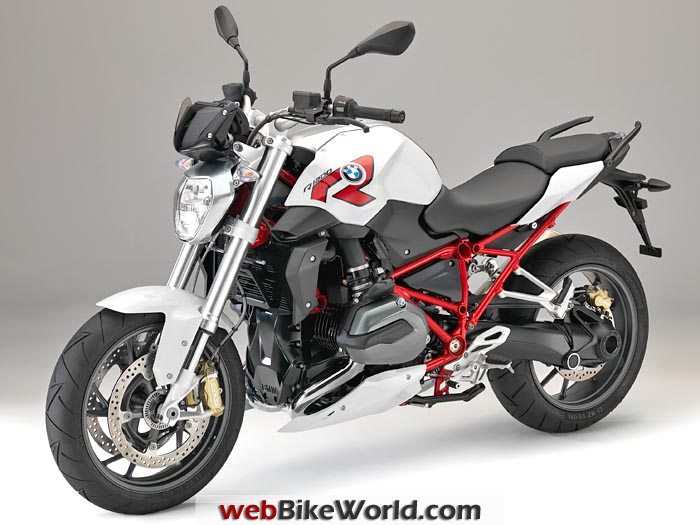
 BMW R 1200 R Boxer Engine
BMW R 1200 R Boxer Engine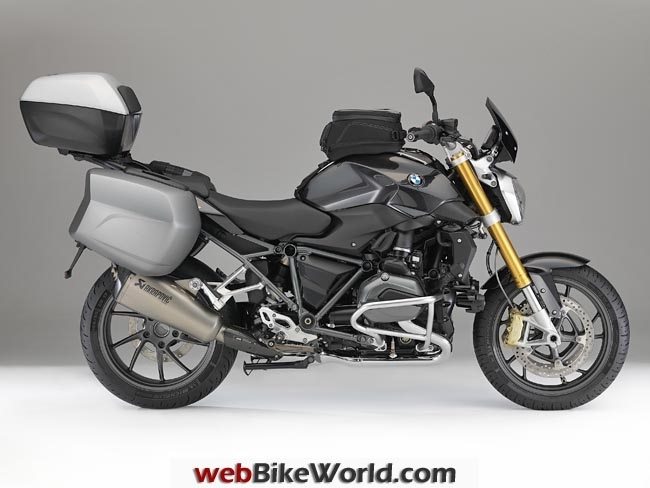
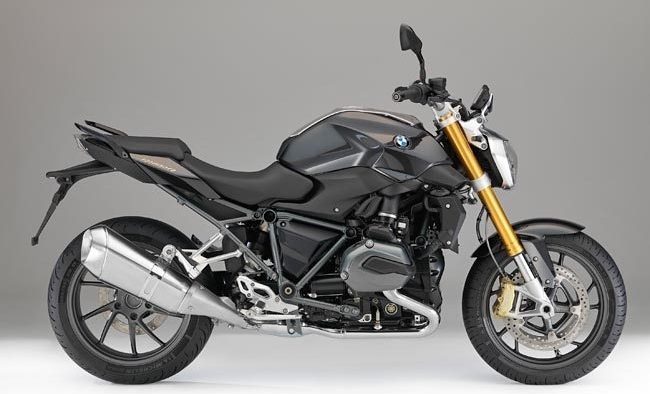
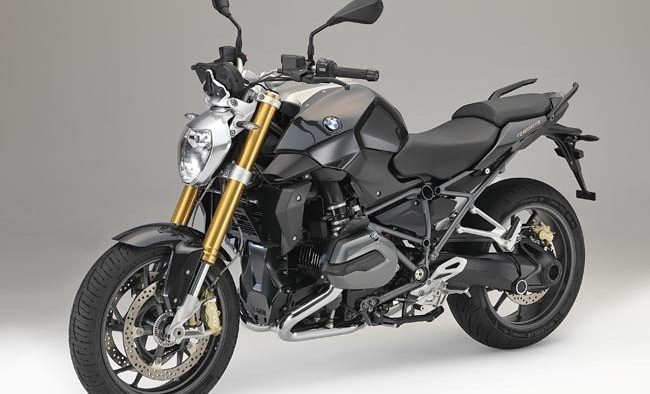

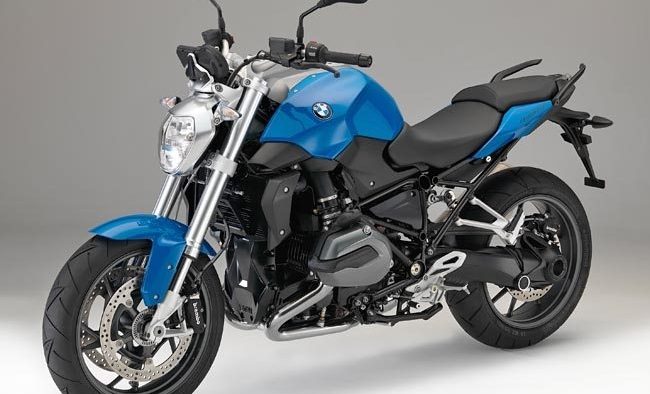
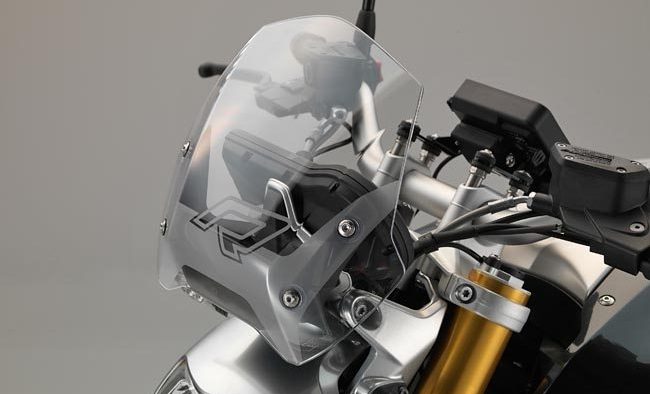
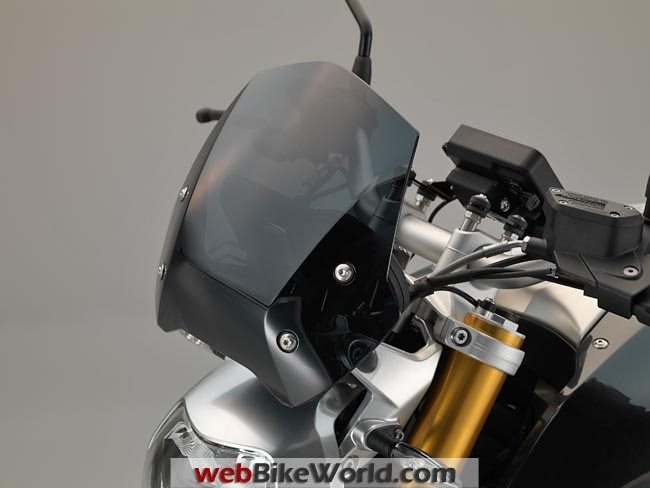
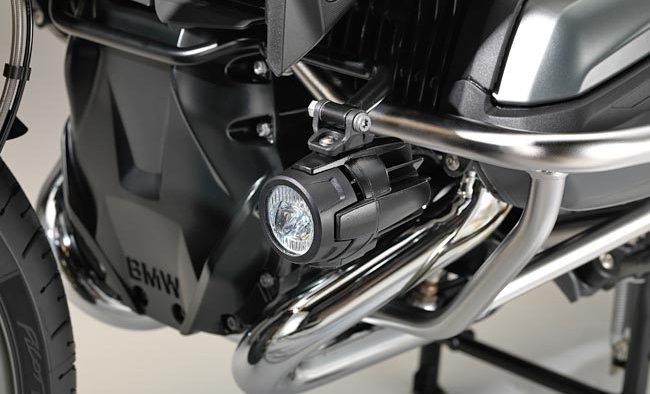

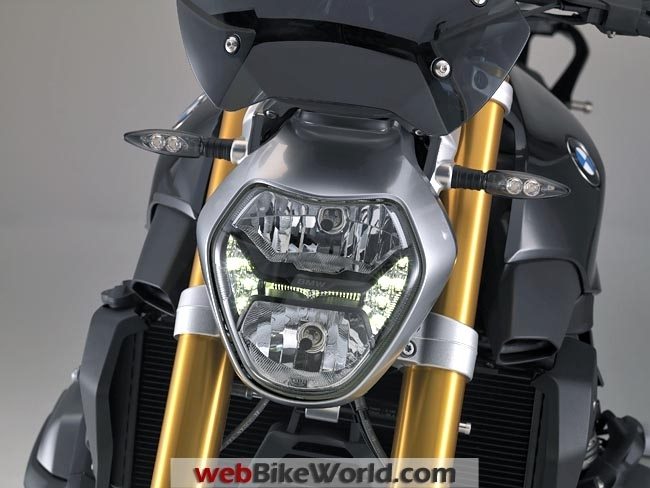
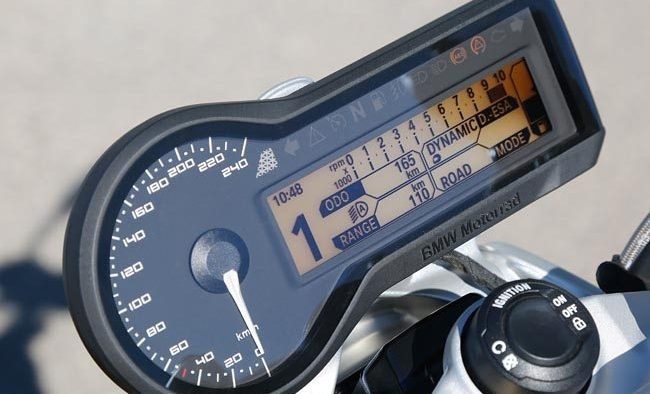
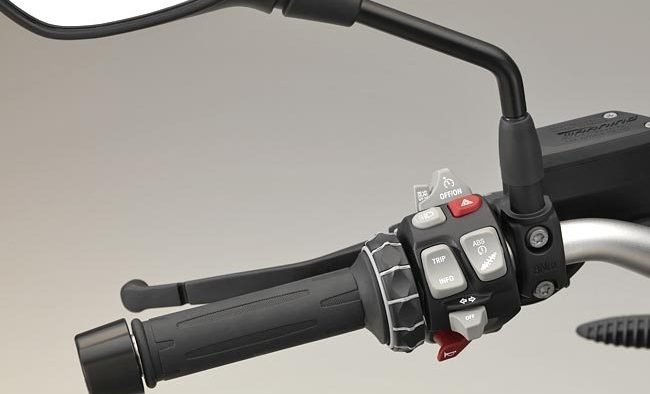
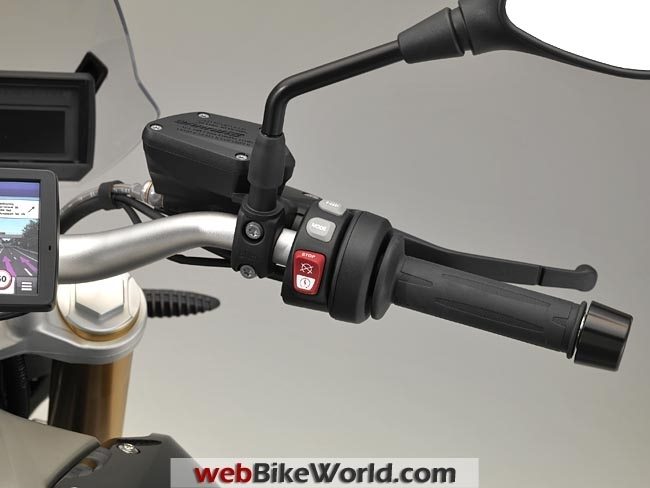
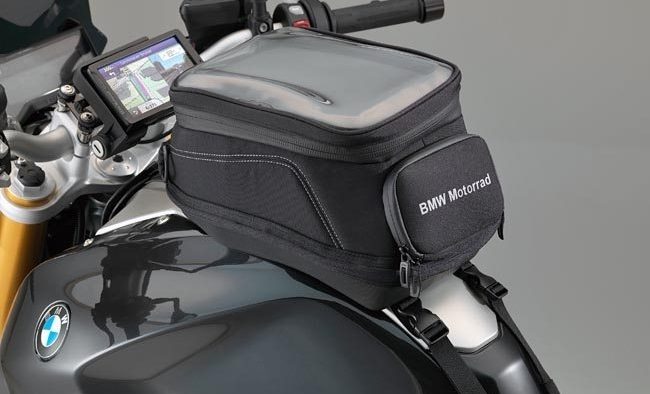


No Comment